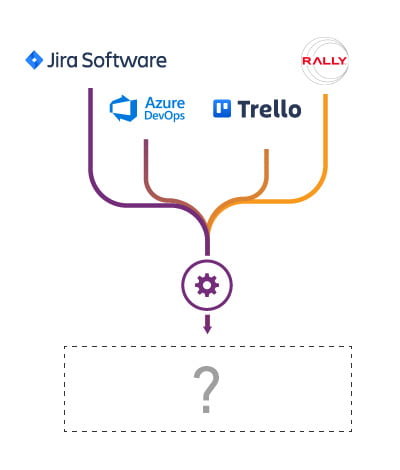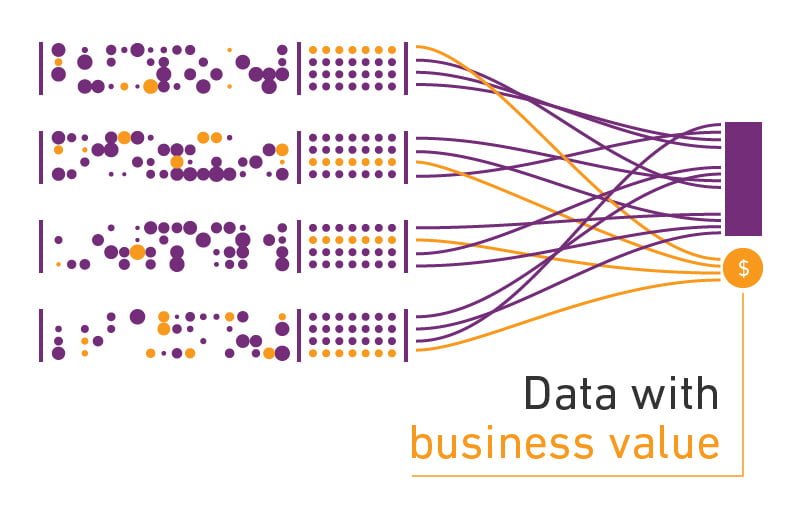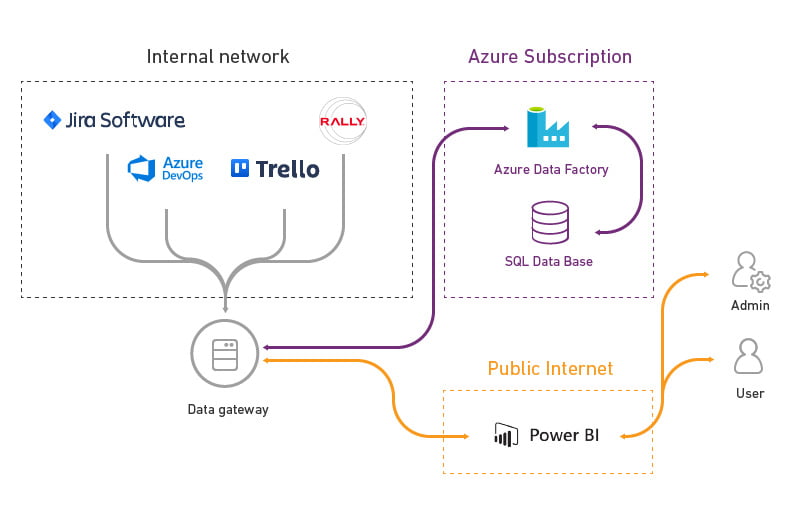The Problem: Illusion of juggling
With over 100,000 employees globally, one of the biggest multinational corporation has a lot of data to analyze. Divided into small teams in different locations, every project manager chooses the best tools for themselves. Some use Trello, others Jira, etc. This little autonomy is crucial for them to operate on the highest level. Unfortunately, what’s suitable for teams, does not always work best for management. It is challenging to take a more comprehensive look at many projects, especially if data comes from multiple sources. That often leads to poor business decisions and overall chaos in planning new tasks, because it’s almost impossible to combine & understand data from different parts of the organization and then make complex decisions based on them.

In this case, converting every manager to the same reporting system wasn’t an option. Every single one chose the best workstyle for their team. Moreover, projects were different from each other and couldn’t be treated and reported exactly the same way. Therefore, the teams’ expectations were impossible to satisfy with one currently used solution.
After we got to know this Fortune 500 firm via close cooperation, we came up with the solution.
Task: Challenges make you discover things
First, we started to gather requirements. For two weeks and multiple workshops, we studied the company’s habits to understand the specific essentials related to the area of operation. Getting to know every team’s different workflow directed us to solution, that best suited the whole firm. Next, we worked with CloudTeam for three weeks on environmental set-up and began consulting with their Corporate Architect. The future of our panacea depended on proper set-up based on Azure. We needed a robust data integration service that allows the creation of data-driven workflows and automates the movement of data. Our Azure Developer took care of that, also creating the API for data exchange. When the environment was built, we connected all source applications. The tricky part was to sift through the information and chose only those with business value. A company as big as that has a lot of data that could create overflow, making the analysts buried in worthless information, but we succeed.
HOW?
The client entrusted us with developing project reporting, so we were focused on data necessary to increase KPIs, such as total vs. open tickets, average handle time, or unsolved tickets per employee. It took three weeks before we could hand it over to our Power BI Development team.

They were responsible for creating a mockup and delivering a working solution that would be readable for management. Close consult with future users was critical in making this tool usable and easy to navigate. When all of the details have been discussed, creation began.
The last step was training that prepared employees to use the environment effectively.

Results
When the implementation has been completed, the staff’s experience has been positively impacted by having all data in one place. Autonomous teams can now optimize their work independently, and management can see essential information by project, sprint team, or even by individual utilization in real-time. All data is synchronized and enriched with business knowledge, so deep-dive analysis is possible, from helicopter views to individual challenges. Efficiency has increased by 15%.
What’s next?
With data consolidation like this, proactive alerting is possible, showing pain points between team utilization and focusing the Project Manager’s attention in the right place. The firm can also use automated reporting, which like all above saves time, saves money, creates consistency and eliminate human error.
It is always such a great feeling to accomplish something as big for the client. For me, the most interesting part was to analyse which data has business value. It took a lot of thinking and raised big questions. Tons of unique information goes through corporation of this size, so choosing the right data must be meticulous and precise. I learned a lot about data sifting during this project. It was a pleasure to work with a team like this.
Wojciech Biedziński, Client Success Manager
